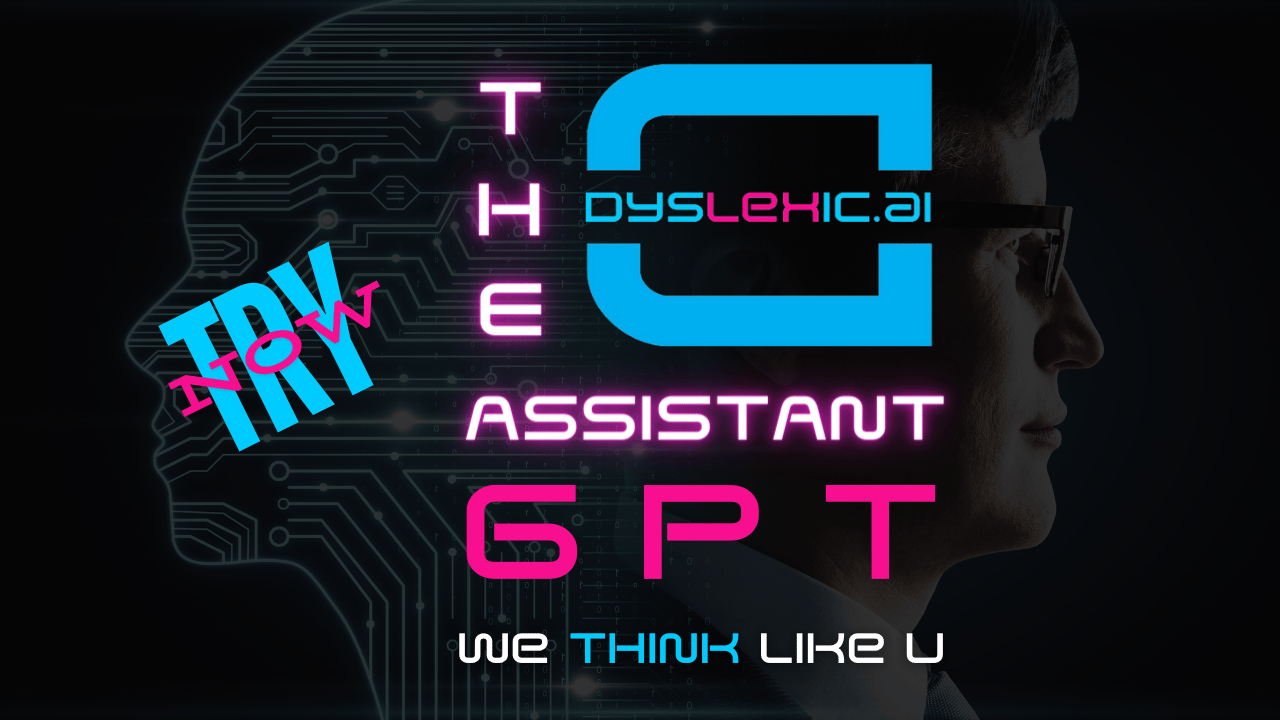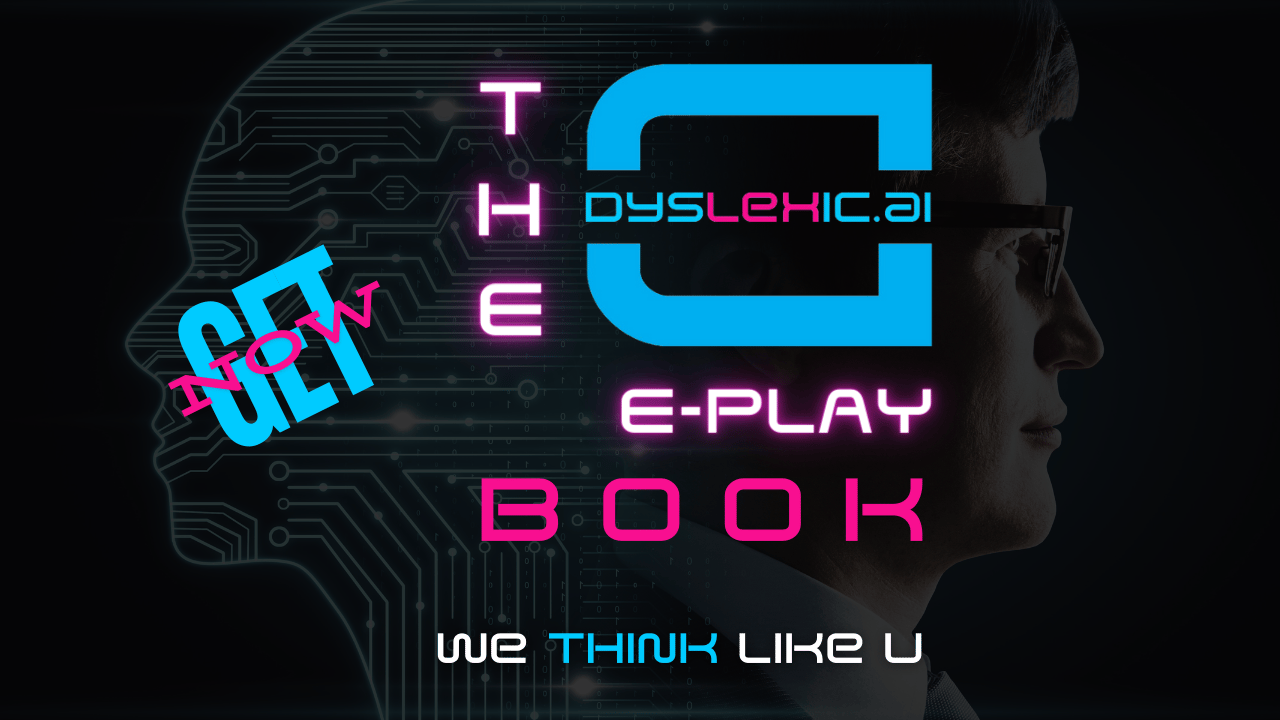- DYSLEXIC AI
- Posts
- Newsletter 269: Why AI Needs Dyslexic Thinking
Newsletter 269: Why AI Needs Dyslexic Thinking
🧠 Harnessing Neurodivergent Creativity to Shape the AI-Driven Future

Good morning, everyone! It’s another beautiful, sunny day here in Northern California, and as always, I’m sitting down with my morning coffee, ready to share some exciting insights with you.
With the fall season in full swing, I find these crisp mornings perfect for reflecting on how far we’ve come and the new innovations on the horizon.
Today’s newsletter is close to my heart, and I can’t wait to dive into it.
As Dyslexia Awareness Month kicks off, the Intelligence 5.0 report by Made by Dyslexia reveals critical insights into the future of dyslexic thinkers in an AI-dominated world.
The findings highlight that nearly three-quarters of dyslexic individuals excel at complex problem-solving—an essential skill in industries that increasingly rely on artificial intelligence.
However, outdated views about intelligence, such as the overemphasis on spelling and grammar, still persist, with almost half of people believing these are reliable indicators of intellectual capability.
|
Dyslexic Thinking: The Key to AI Innovation
AI is advancing rapidly, and it excels at pattern recognition, data analysis, and automating repetitive tasks.
But when it comes to creative, lateral problem-solving—the very areas where dyslexic thinkers shine—AI still falls short. Dyslexic minds naturally connect seemingly unrelated ideas, finding solutions that elude more linear thinkers.
This unique approach is exactly what the future of AI and industries like tech, design, and problem-solving demand.
The Intelligence 5.0 report emphasizes that dyslexic thinking skills, such as creativity and strategic thinking, are more important than ever.
As industries adopt AI, there will be an even greater need for professionals who can use these tools to innovate, adapt, and think beyond the obvious.
Moving Beyond Outdated Perceptions of Intelligence
While AI has made strides in automating tasks that were once human-exclusive, such as editing and summarizing text, the old views about intelligence—specifically, that spelling and grammar reflect cognitive ability—are still held by nearly half of the population.
Dyslexic thinkers often struggle with these tasks, but AI tools can help bridge the gap, freeing them to focus on their real strengths: creativity, intuition, and problem-solving.
With AI tools readily available, we must evolve our understanding of what intelligence truly means.
Today’s workforce needs individuals who think differently and approach challenges from new angles—skills that dyslexic thinkers have in abundance.
Dyslexic Thinking in Schools and Workplaces
In schools, dyslexic thinkers often thrive when given the right tools and teaching approaches.
Instead of focusing solely on traditional spelling and grammar, project-based learning and creative problem-solving offer neurodivergent students the opportunity to shine.
AI can be a significant ally in this transformation by handling repetitive tasks like editing or information retrieval, freeing students to focus on their strengths—such as conceptualizing big ideas or finding innovative solutions to complex problems.
For workplaces, embracing dyslexic thinkers requires shifting from rigid, linear tasks to more dynamic, creative roles that leverage lateral thinking.
AI plays a crucial role by automating routine administrative tasks, allowing neurodivergent employees to focus on strategic, high-level contributions.
As businesses move forward into the 21st century, it’s essential to prioritize AI literacy and AI fluency, equipping all employees with the skills to understand and leverage AI.
Companies must create inclusive environments where diverse ways of thinking are celebrated, fostered through technology, mentorship, and collaboration.
AI-enabled systems will not only increase efficiency buincrease efficiency andemployees to innovate, bringing their unique perspectives to complex problem-solving and driving business success.
The future workplace will thrive by embracing these creative thinkers while ensuring every team member has the fluency and confidence to use AI tools for enhanced productivity and decision-making.
This vision represents a forward-thinking approach to inclusive, AI-driven business opportunities.
Businesses and educational systems alike must not only recognize dyslexic thinking but also actively foster it.
The combination of AI and human creativity offers endless possibilities—and by focusing on these strengths, we can help shape a more inclusive future.
AI and Dyslexic Thinking: A Powerful Combination
Dyslexic thinkers, with their ability to make lateral connections and solve complex problems, are uniquely suited to thrive alongside AI.
As AI continues to transform industries, we must celebrate and support neurodivergent individuals who can guide us toward innovative solutions that challenge the status quo.
Whether it’s in education, business, or AI development itself, dyslexic thinkers have a critical role to play in shaping the future.
As AI grows smarter, it’s the human mind’s unique approach—particularly the neurodivergent approach—that will set us apart and push us forward.
Final Thoughts
I hope today’s reflections inspire you to think about how dyslexic thinking and AI can come together to create something extraordinary.
As we move through this season of change, remember that every challenge offers an opportunity for growth, and our unique perspectives are what will drive innovation.
Let’s embrace the future together—one creative idea at a time.
We Think Like You
Matt Ivey & The Dyslexic AI Team
P.S. As someone who is passionate about helping neurodivergent thinkers succeed, my love for coaching and consulting extends to all businesses.
But I find it especially rewarding to work with neurodivergent business owners and entrepreneurs.
AI has the potential to transform businesses of all types, and my goal is to help others unlock that potential, creating tailored solutions that align with their unique thinking and strengths.
If you’re looking for support in harnessing the power of AI, I’m here to guide you on that journey!

The TL;DR for Our Fellow Skimmers
• Dyslexic Thinking is the Future: The Intelligence 5.0 report by Made by Dyslexia finds that dyslexic skills like creativity and problem-solving are critical for the AI-driven future.
• Outdated Views Persist: Despite technological advancements, many still see spelling and grammar as measures of intelligence.
• Empowering Neurodivergent Minds: Schools and businesses need to create environments that nurture and support dyslexic thinkers, especially as AI takes on routine tasks.
What did you think about today's edition? |
What should the next deep dive be about? |
|
|
|







Reply